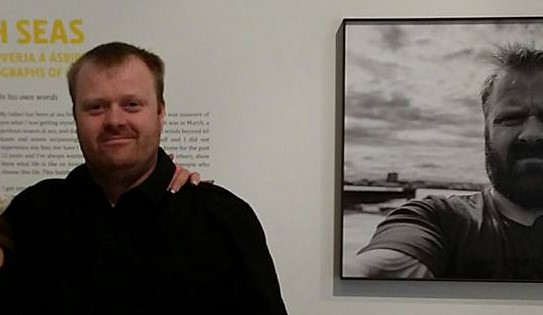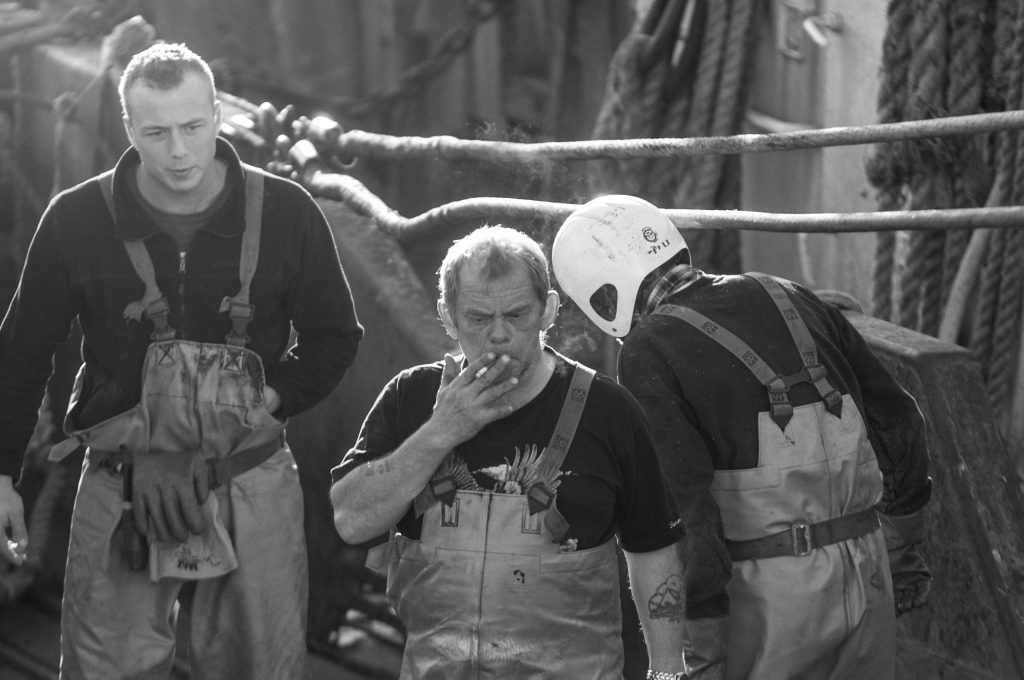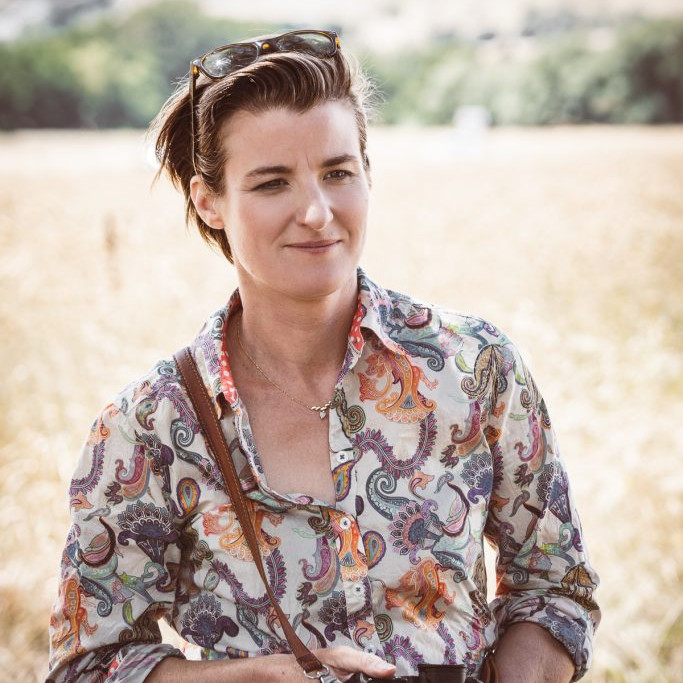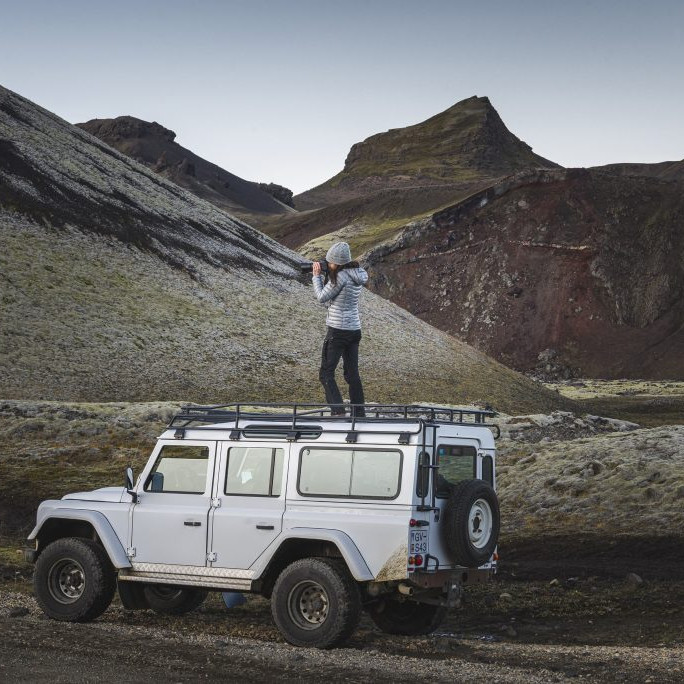Pröstur Njálsson Photographer - Hafnarfjörður, Iceland
How did you become involved in the exhibition Bræla ‘Rough Seas’ at the Reykjavik Maritime Museum?
I wanted to display my photographs from my job as a fisherman on an Icelandic trawler. It was my hope that by showing these photographs people could see what fishermen have to go through on a daily basis out at sea.
First I contacted the CEO, of HB Grandi, Vilhjálmur my employer and asked him if the company would allow me to take the photographs while at work and if they would be willing to help me to set up the exhibition. They helped with everything and through their sponsorship, everything became a reality. Bræla at the Reykjavik Maritime Museum became my second exhibition.

Explain the involvement of HB Grandi in this project.
I work for HB Grandi and they sponsored my project and my exhibition.
From Wikipedia
HB Grandi is a fishing and fish processing company in Iceland. HB Grandi’s headquarters are in Reykjavík where its office and ground fish production are located. The company also runs fish processing plants in two other towns in Iceland, Akranes and Vopnafjörður.
The company currently operates three freezing vessels, four wetfish trawlers and three pelagic vessels and runs fish processing plants in Reykjavík, Akranes and Vopnafjörður. HB Grandi markets its products worldwide, products made from both ground fish and pelagic fish caught and processed by the company. In 2013 the company was awarded the Icelandic Presidential export award.
How many photographs were in the exhibition?
In all there were 19 photographs in the exhibition.
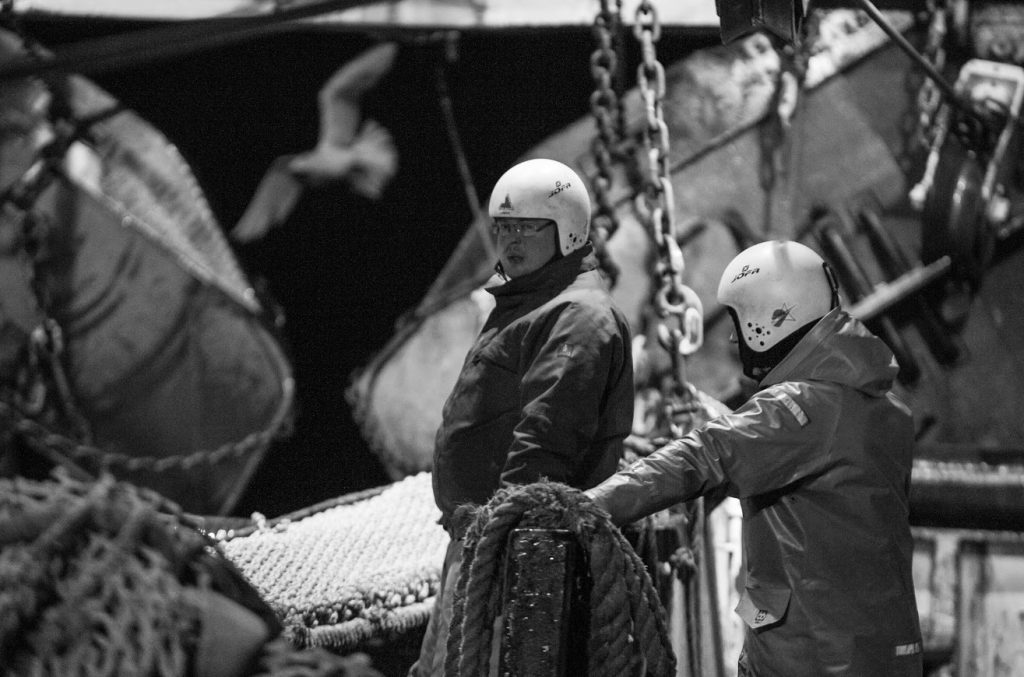
Can you explain a bit about the actual museum?
It is a museum about the history of Icelandic fishing and fishermen of Iceland. 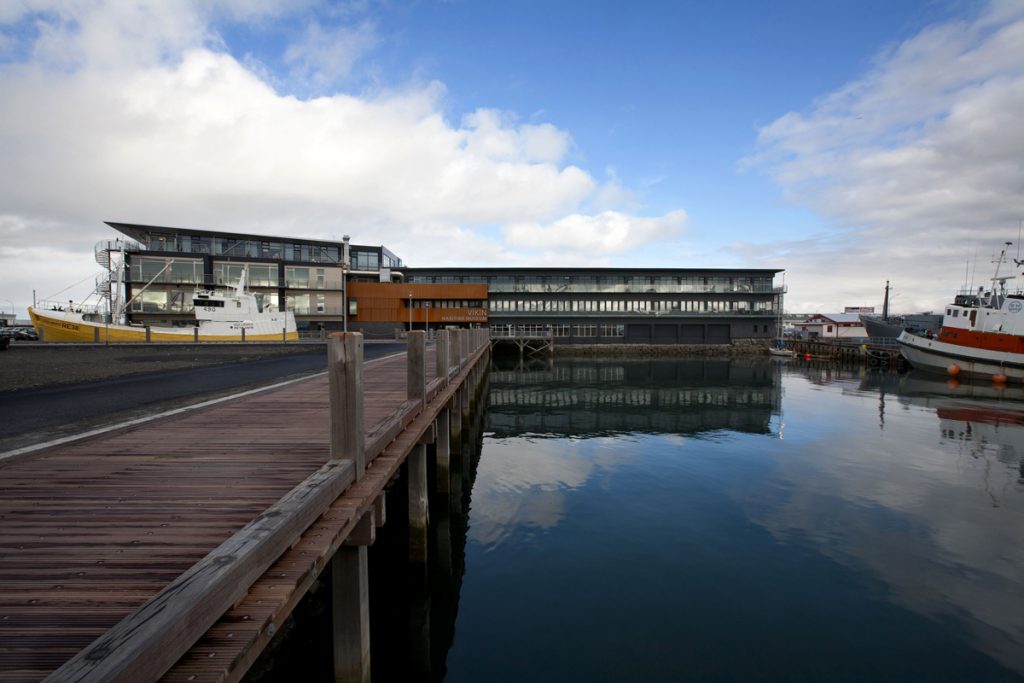
The Reykjavík Maritime Museum
The Reykjavík Maritime Museum is located by the old harbour in Reykjavík, in a building that was originally built as a fish freezing plant. It was founded in the year 2004, and opened its first exhibition in June 2005.
Icelanders have from the time of settlement depended on fishing. Settlement at Faxaflói Bay was founded on fishing and fish processing. Since the 19th century, the growth of the cities Reykjavík and nearby Hafnarfjörður was largely based on the fisheries, as well as improved living conditions in the 20th century. The fishing industry has been the foundation of prosperity in Iceland. The main purpose of the museum is to collect items and accounts that tell this story and make exhibitions that are based on those findings.

How long have you been a professional fisherman?
I have been a professional fisherman for thirteen years.
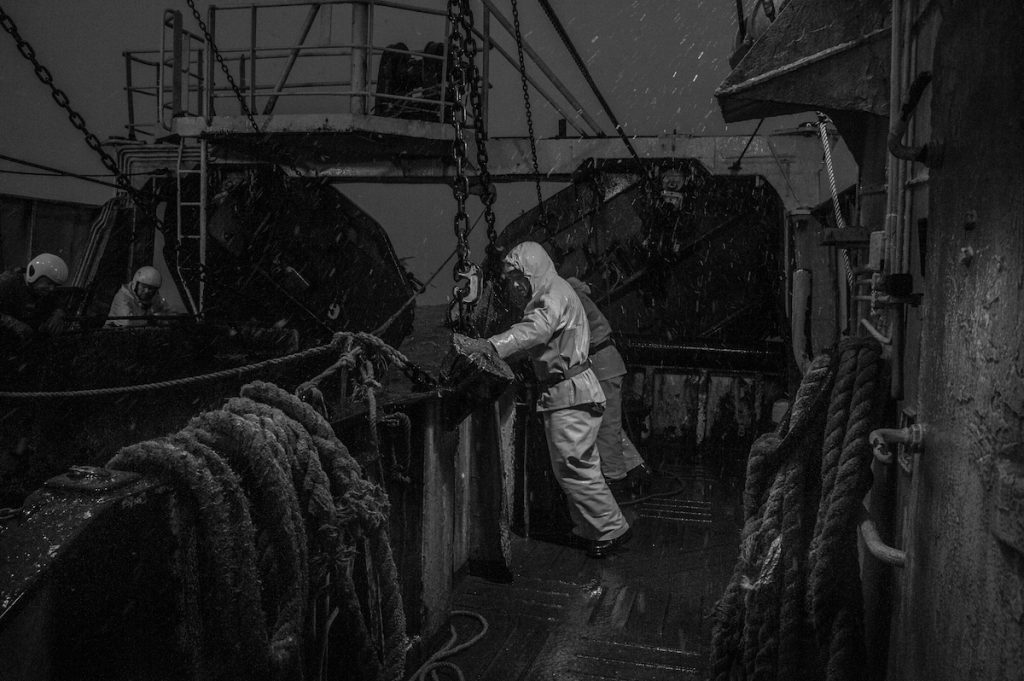
Are you from a family of fishermen?
My family have been fishermen for four generations and during this time life at sea has changed a great deal but always a fisherman needs to be part of team and constantly alert.
Explain how far out at sea most of the images were taken?
The photographs were all taken while I was a fisherman on the trawler Ásbjörn RE50, and working in the actual conditions that the photographs were taken. The photographs were taken from a minimum of 2 miles out to 20 miles out to sea.
It was my aim to give a unique insight into life on board a modern Icelandic fishing trawler through photographs that could only by captured by a veteran of the seas. I wanted the viewer to be taken to a world unknown to most, one that is rapidly changing as ships and automation processes become more and more advanced.
What weather conditions were the taken in?
The majority of the photographs were taken in really bad conditions with wind speeds up to 35 meters and waves up to 18 meters high.
How long are you at sea with each trip?
It is normal for us to be aboard the trawler from two days but up to six days out at sea.
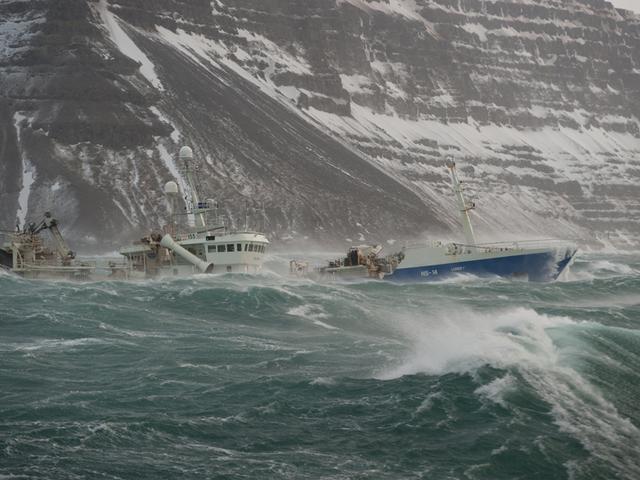
When was the first time you decided to take your camera on board with you?
I bought my first camera in 2011 and straight away I took it with me. I have always wanted to show others what my life at sea is like.
What has been the reaction of the rest of the crew to you taking photographs while at sea?
We are a strong team and need and want to be so. My photographs would not have been possible without them being happy to become a part. They are all very happy about it and they are all thankful that we have worked together to bring the photographs to an exhibition showing what we do on board.
What special lenses etc have you needed to waterproof your camera?
No I have no waterproof lenses for my photographs. I use a Nikon D800 and it is weather sealed I always that my gear is replaceable; so I take my chances.
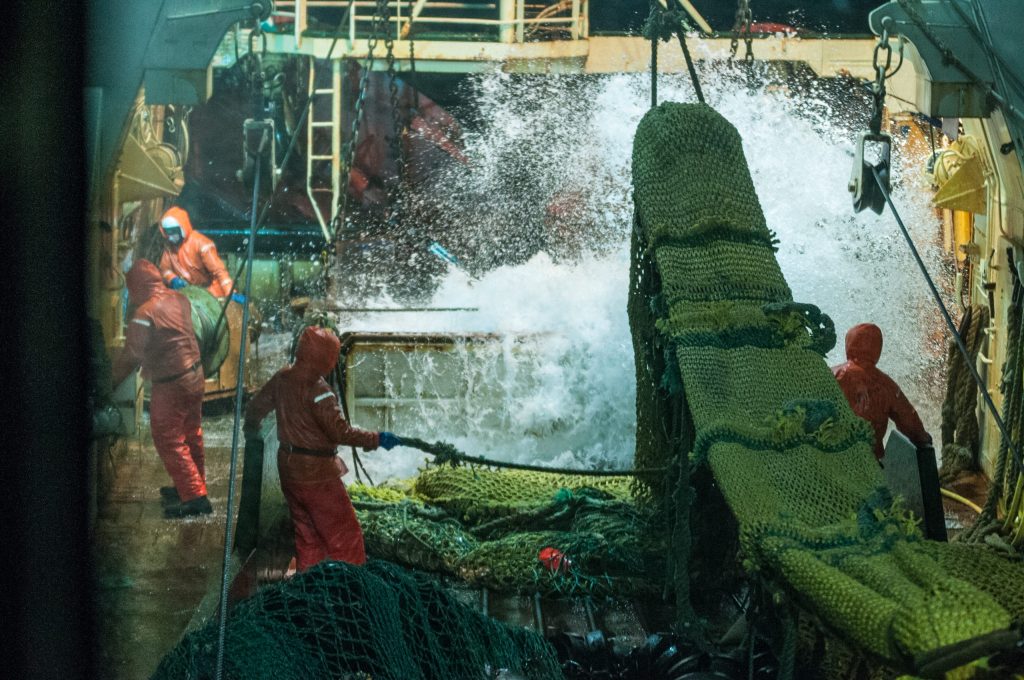
This is your second exhibition what was the first about?
My first exhibition was about free diving and scuba diving which is another of my passions in life. I enjoy the images that are achievable through underwater photography and it is wonderful to be able to combine two of my passions.
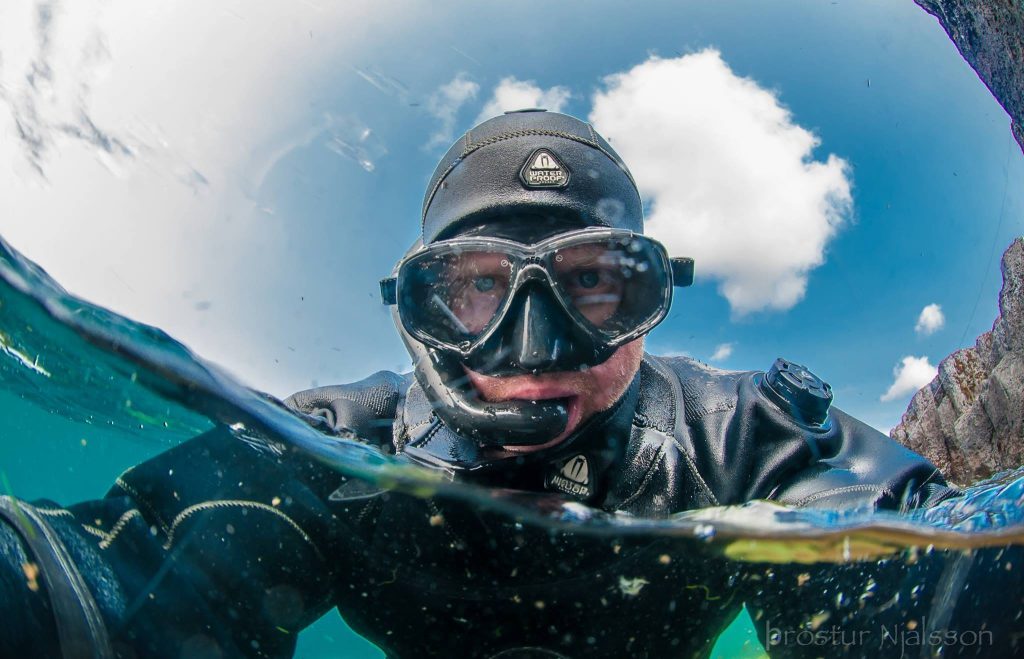
What are you currently working on?
Currently I am work on getting together a photography book about bræla. I am hoping that it will come out in the summer of 2017.
As well as the book I am spending time photographing free diving and how it is now part of Icelandic culture, again I want others to see what I see but this time not at work rather under the sea.
Fishing is a vital part of the Icelandic economy – discuss the importance of recording it in the 21st Century.

What I am photographing is for there to be a record of the last of an era in Icelandic fishing history. The vessels that I currently work on and we still use today in Iceland are the last of their breed. Next year we are getting brand new fishing vessel. It will come with all the latest technology and it will revolutionize the fishing industry. Opening up a new era in Icelandic fishing history.
Contact details:
Pröstur Njálsson
Pröstur Njálsson, Hafnarfjörður, Iceland
Interview by Deborah Blakeley, September, 2016
Think a colleague or friend could benefit from this interview?
Knowledge is one of the biggest assets in any business. So why not forward this on to your friends and colleagues so they too can start taking advantage of the insightful information the artist has given?
Other artists you may be interested in:


